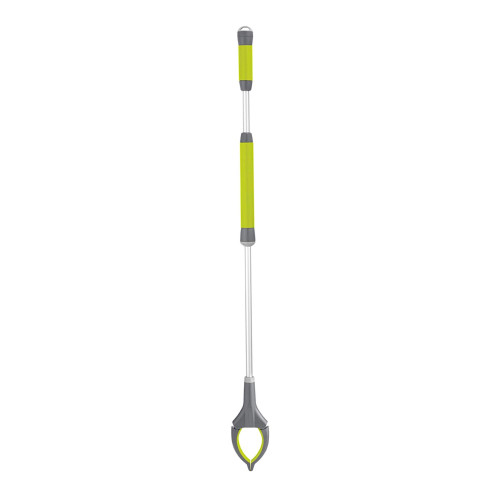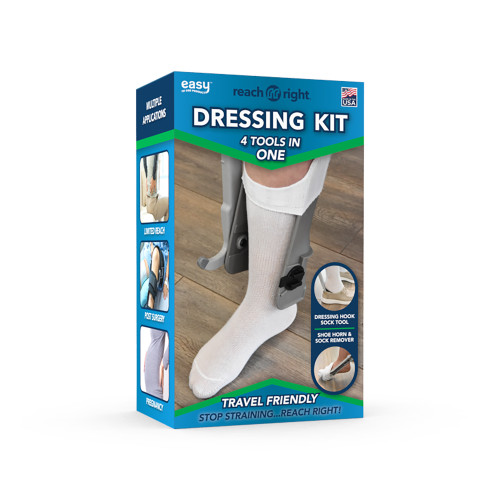-

McKesson
McKesson Black Anti-Fatigue Floor Mat
Reduce the fatigue that comes from standing on hard floors with the McKesson Anti-Fatigue Mat. Thick and comfortable to stand on, this antifatigue mat can reduce shock fatigue when used with a standing desk, a stove, a sink, a kitchen counter and by hair...
As low as $122.73 -

McKesson
McKesson Black Step Stool with Handrail
Package Count: 2. The McKesson Step Stool with Handrail has a height of 8.75 inches providing convenient elevation when and where you need it with a fixed handrail for added support and balance. This step stool has a large step that allows for stability...
$72.20 -

McKesson
McKesson Black Step Stool
The McKesson Step Stool has a height of 8.75 inches providing convenient elevation when and where you need it. This step stool has a large step that allows for stability and is made from durable, lasting material. Use the McKesson Step Stool as a safe...
$40.92 -

KardiaMobile
KardiaMobile Card ECG Mobile Card
KardiaMobile Card is the first and only credit-card-sized personal EKG to be cleared by the FDA. It’s thin and light enough to fit perfectly in your wallet, so you can take it with you anywhere. KardiaMobile Card uses Bluetooth to connect to your phone...
$124.37 -

KardiaMobile
KardiaMobile Electrocardiograph
KardiaMobile 6L is the world’s only FDA-cleared, 6-lead personal EKG. Six leads means 6 times the heart data, giving you and your doctor the most detailed view of your heart you can get outside of a hospital. KardiaMobile 6L can detect AFib, Bradycardia,...
$164.42 -

McKesson
McKesson Backless Exam Stool 17.75 to 24.5" Height Range
McKesson exam stools are designed to give caregivers the comfort they need with durable construction that ensures lasting performance with daily use. Made with five wheel casters this stool allows for quick and easy mobility without having to leave the...
As low as $251.74 -

Marpac
Marpac Fog White Sound Machine
Dohm, Marpac's signature sound conditioner creates the smooth, soothing sound of rushing air, also known as white noise, to effectively block noises across a broad range of frequencies.Dual-speed version (formerly known as the Sleepmate / Soundscreen...
$67.56 -

Mabis
HealthSmart GripLoc Reaching Aid
Retrieve items safely and easily with the help of the HealthSmart GripLoc Sliding Reacher Grabber. It adds 43 inches to your reach so that you can grab objects that are on the ground or in elevated locations without bending or stretching. Unlike other...
$48.45 -

HealthSmart
HealthSmart Adjustable Length Reacher with Rotating Jaw, Grip Handle
HealthSmart® Adjustable Length Reacher with Rotating Jaw is a suitable solution for carefully obtaining objects from hard to reach areas. This convenient grabber features an innovative adjustable length design that extends your reach a full 30 to 44...
$64.08 -

Easy to Use Products
Reach Right Dressing Kit with Shoe Horn, Sock Aid, Dressing Hook
Introducing the Reach Right Dressing Kit - the ultimate solution for individuals with limited mobility and flexibility. This 4-in-1 tool is designed to make your daily routine easier and hassle-free. With the included shoehorn, you can effortlessly slide...
As low as $29.79 -

EZY Dose
Ezy Dose Red Vial Cap Opener
Vial cap opener tool lifts the plastic lid off most bottles. Rest the handle on top of the bottle and move the curved part of the device just under the lid but not all the way to the neck of the bottle. Slowly and gently press down on the handle with the...
$13.12 -

Drive
drive Silver Step Stool with Handrail
Steel welded construction Non-skid ribbed rubber platform Reinforced rubber tips Handrail 34 inches high
$71.16
Self-Help Aids

Self-Help Aids
There are dozens of types of self-help aids, from simple medication organizers to lift chairs. Here are some of the most common aids and why you might want them.
Medication Aids
For people taking multiple medications, simply keeping track of what to take and when to take it can be a chore. Opening pill bottles can be difficult. When taking medication that needs to be split or crushed, it’s even more complicated. Medication aids make it easier.
Medication aids include things such as:
Grabbers and Reaching Aids
For people with limited mobility or poor balance, simply reaching up to a high shelf or bending over to retrieve something from the floor can be impossible. However, a grabber, is a tube with pinchers at one end and a trigger at the other that allows people to reach and grasp items that might otherwise remain out of reach.
Dressing Aids
Bending to put on socks or shoes can be a struggle, as can buttons and even zippers. However, stocking aids (which assist in donning socks), long-handled shoehorns (which make shoes easy to slip on), button hooks (which pull buttons through buttonholes), and zipper pulls (which grab zipper tabs and make them easy to pull) can help those with mobility issues to dress.
Dining Aids
Mastering dinnerware may be a challenge for people with impaired hand functionality, such as advanced arthritis. However, adaptive dinnerware such as non-spill bowls and two-handled mugs can reduce accidents. In addition, flatware with oversized and ergonomic handles can be easier for those with limited grip to grasp.
Self-Transfer Aids
Getting in and out of bed, sitting down and rising from chairs, and getting into and out of cars can seem like an impossible task. However, many self-transfer aids allow people to make these transitions themselves rather than relying on others, even if they use a wheelchair.
There are dozens of types of self-help aids, from simple medication organizers to lift chairs. Here are some of the most common aids and why you might want them.
Medication Aids
For people taking multiple medications, simply keeping track of what to take and when to take it can be a chore. Opening pill bottles can be difficult. When taking medication that needs to be split or crushed, it’s even more complicated. Medication aids make it easier.
Medication aids include things such as:
- Pill organizers, which help you keep track of what medication to take and what time of day to take them
- Medication timers, which can be programmed to remind you when it’s time to take your medication
- Pill splitters, which neatly and efficiently divide pills for you.
- Pill Crushers, which effortlessly pulverize pills.
- Easy-open pill bottle caps, which allow people with poor manual dexterity to grip and take off lids
Grabbers and Reaching Aids
For people with limited mobility or poor balance, simply reaching up to a high shelf or bending over to retrieve something from the floor can be impossible. However, a grabber, is a tube with pinchers at one end and a trigger at the other that allows people to reach and grasp items that might otherwise remain out of reach.
Dressing Aids
Bending to put on socks or shoes can be a struggle, as can buttons and even zippers. However, stocking aids (which assist in donning socks), long-handled shoehorns (which make shoes easy to slip on), button hooks (which pull buttons through buttonholes), and zipper pulls (which grab zipper tabs and make them easy to pull) can help those with mobility issues to dress.
Dining Aids
Mastering dinnerware may be a challenge for people with impaired hand functionality, such as advanced arthritis. However, adaptive dinnerware such as non-spill bowls and two-handled mugs can reduce accidents. In addition, flatware with oversized and ergonomic handles can be easier for those with limited grip to grasp.
Self-Transfer Aids
Getting in and out of bed, sitting down and rising from chairs, and getting into and out of cars can seem like an impossible task. However, many self-transfer aids allow people to make these transitions themselves rather than relying on others, even if they use a wheelchair.
- Transfer boards help those in wheelchairs transfer themselves to other seats.
- Seat lifts are unique cushions that sit atop a chair seat or sofa. They are mechanical devices that, when engaged, raise the back of the cushion and help the user to stand up. Seat lifts can be manual or motorized.
- Couch canes are free-standing, cane-like devices with a base that slips under the sofa's edge and a solid, non-slip hand grip that the user can grasp to help them rise to a standing position.
- Bed canes are similar, but slip between mattress and box springs and help the user sit up.
- Swivel cushions are circular cushions that sit on a standard car seat. The cushion contains a mechanism that allows it to swivel (like an old-fashioned bar stool or lazy Susan), making it easy for the user to maneuver in and out of the car.
